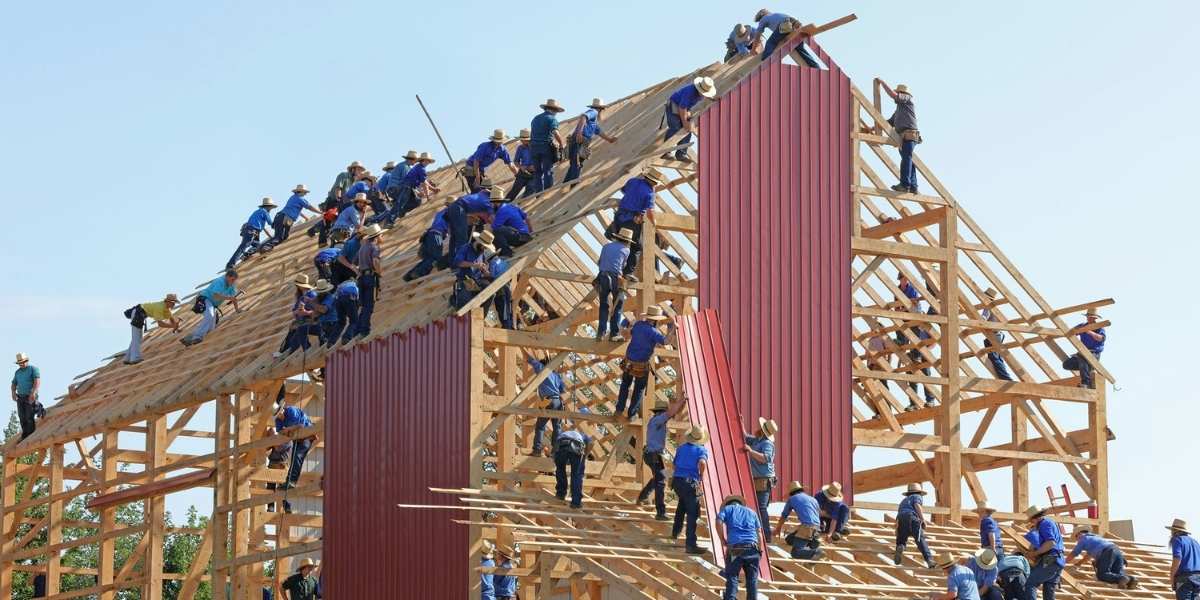The Power of Synergy
When people gather in a workplace, the manner in which they interact and collaborate fundamentally shapes their collective achievements. This intricate web of relationships, known as effective team dynamics, forms the essential foundation for any successful operation. It extends beyond individual capabilities; it’s about how those distinct skills merge and amplify each other to achieve shared objectives. Understanding and cultivating these dynamics can transform a disparate collection of individuals into a highly productive unit, propelling an organization forward with remarkable efficiency and precision. True synergy emerges when the collective output far exceeds the sum of individual contributions, a direct result of well-managed and positive team interactions. This holistic approach to group functioning is what truly distinguishes high-performing teams from those that merely exist.
Read Also: Building Your Network in the Workplace: Simple Strategies for Success
The importance of focusing on these internal workings cannot be overstated. A team might possess extraordinary talent, but if its members struggle with communication, lack a shared vision, or fail to trust one another, their potential remains untapped. Conversely, a group with less individual experience but strong, effective team dynamics can often outperform a more talented but disorganized one. It is this relational aspect, how individuals connect and contribute within the group structure, that becomes a primary determinant of an organization’s sustained operational success. This focus on the human element within a professional setting is what builds resilience and fosters a culture of continuous improvement, making the entire system more robust and adaptable.
How Does Clear Communication Foster Workplace Synergy?
Building effective team dynamics begins with establishing clear and open communication. When team members feel comfortable expressing their thoughts, raising concerns, and providing feedback openly and respectfully, it cultivates an environment of profound trust. This transparency ensures everyone remains aligned, minimizing misunderstandings and allowing information to flow unhindered. It involves actively listening to each other, truly understanding diverse viewpoints, and guaranteeing that every voice has the opportunity to contribute. This ongoing exchange of ideas often ignites innovation, leading to more comprehensive and creative solutions than any single person could devise alone.
This isn’t just about sharing facts; it’s about building a shared context and mutual understanding. Effective communication means that messages are not only sent but also received and interpreted as intended. It includes both formal channels, like team meetings and project updates, and informal interactions that help build rapport and clarify nuances. This continuous, evolving conversation deepens understanding and strengthens the internal bonds within the group, making it easier for the team to navigate complexities and achieve operational success. Without this crucial foundation, even brilliant individual efforts can become fragmented or misdirected, hindering overall progress and diminishing the potential for true team collaboration.
Why is Shared Purpose Essential for Group Efficiency?

Another vital element contributing to operational success through strong team dynamics is the presence of a shared purpose. When every member not only understands but also commits wholeheartedly to the overarching objective, their individual efforts naturally converge. This collective commitment transcends the mere completion of tasks; it represents a unified vision that inspires everyone to contribute their very best work. Imagine a highly skilled orchestra, where each musician performs their part flawlessly, not just for their personal excellence, but for the harmonious beauty of the entire composition. This alignment ensures that resources are allocated and utilized efficiently, and that collective energy is channeled towards the most impactful activities.
A clear, shared purpose provides direction and motivation, acting as a compass for the entire team. It helps individuals prioritize their tasks and make decisions that consistently support the collective goal, rather than just their personal objectives. This alignment is crucial for group efficiency because it minimizes redundant work, clarifies roles, and reduces internal conflicts that can arise from misaligned agendas. Without a clearly defined and embraced shared purpose, even a group of highly talented individuals might inadvertently pull in different directions, resulting in fragmented efforts, wasted resources, and significantly delayed outcomes. This unity of objective is a cornerstone of group efficiency, ensuring every action contributes meaningfully to the common goal and solidifying the path to operational success.
How Does Psychological Safety Enhance Team Collaboration?
The presence of psychological safety is also critically important for nurturing workplace synergy. This signifies creating an environment where team members feel genuinely safe to take calculated risks, acknowledge mistakes, and offer unconventional ideas without the debilitating fear of judgment, criticism, or negative repercussions. When people feel secure in their environment, they are far more likely to be creative, willing to experiment with novel approaches, and learn effectively from any setbacks. This sense of security fosters both resilience and adaptability within the team, which are invaluable attributes in any constantly evolving professional landscape.
Psychological safety encourages a culture of continuous learning and improvement. It allows team members to admit when they don’t know something or need help, fostering an environment where asking questions is encouraged, not penalized. This open approach facilitates authentic team collaboration, where individuals are not apprehensive about being vulnerable or seeking assistance from their peers, which in turn significantly strengthens the collective capacity for problem-solving. This uninhibited exchange of ideas, even imperfect ones, often leads to breakthroughs and innovative solutions that might otherwise remain undiscovered, directly contributing to operational success. When team members feel safe to be themselves and share their true thoughts, they contribute more fully and enthusiastically to the team’s objectives.
What Role Does Accountability Play in Operational Success?
Accountability also holds a significant position in fostering group efficiency. Each team member clearly understands their specific responsibilities and the direct impact their individual work has on the collective outcome. This is not about oppressive micro-management, but rather about setting clear expectations and fostering mutual reliance among colleagues. When individuals are held accountable to the team, it powerfully reinforces their commitment and ensures that tasks are completed reliably and to a high standard. This foundation of dependability builds deep trust, as everyone knows they can confidently rely on their colleagues to fulfill their part of the agreement.
This shared sense of responsibility creates a powerful, self-regulating mechanism within the team, continuously propelling everyone towards higher performance standards and ensuring consistent progress towards operational success. It helps to distribute workload fairly and ensures that no single point of failure jeopardizes the entire project. When accountability is clearly defined and consistently practiced, it reduces ambiguity, enhances motivation, and creates a sense of shared ownership for the team’s results. It ensures that commitments are honored and that the team operates with a high degree of precision and professionalism, contributing directly to sustained operational success.
How Does Adaptability Drive Sustained Operational Success?
Adaptability stands as another defining characteristic of teams exhibiting effective team dynamics. The intrinsic ability to rapidly adjust to new information, evolving circumstances, and unforeseen challenges is absolutely critical for achieving sustained operational success. These teams are not rigid or stuck in old ways; instead, they are inherently flexible and highly responsive, capable of strategically pivoting their approaches when necessary. This requires a collective mindset geared towards continuous learning and iterative improvement, allowing them to remain agile in the face of change.

Highly adaptable teams view change not as a threat, but as an opportunity for growth and refinement. They are open to experimenting with new tools, processes, and methodologies, constantly seeking ways to optimize their workflows and maintain their competitive edge in a dynamic marketplace. This inherent flexibility allows them to deftly navigate complex and often unpredictable landscapes, ensuring they remain effective and productive even when confronted with significant uncertainty. Their capacity to embrace change, rather than resist it, positions them powerfully for long-term growth and resilience, securing their pathway to continuous operational success.
Why Is Investing in Team Dynamics Crucial for Organizations?
Investing in the cultivation of effective team dynamics represents a strategic investment in an organization’s long-term future. It consistently leads to markedly improved decision-making, as a wider array of diverse perspectives are brought thoughtfully to the table. It significantly enhances problem-solving capabilities, as complex challenges are tackled collectively with a broader spectrum of varied skills and insights. It dramatically boosts overall productivity, as individuals work more harmoniously and efficiently towards common, unified goals. Furthermore, it fosters a more positive, supportive, and engaging work environment, which in turn substantially reduces employee turnover and actively attracts top-tier talent to the organization.
The cumulative effect of these synergistic elements is the creation of a powerful, self-sustaining engine for enduring growth, continuous innovation, and consistent achievement. The journey to cultivate strong team dynamics is, by its very nature, an ongoing process. It demands consistent, dedicated effort from both leadership and every single team member to meticulously nurture an environment defined by trust, mutual respect, and profound understanding. This deep and continuous investment in how people work together is far more than just a consideration of “soft skills”; it is, in fact, a fundamental and strategic imperative for driving sustained and exemplary operational success in any endeavor.
Read Also: Small Business Trends Shaping Success in Mid-2025
By consciously prioritizing the development of robust team dynamics, organizations build a foundation that can withstand challenges, innovate efficiently, and thrive in an ever-changing world. It’s a commitment to recognizing that the collective strength of a well-functioning team is the true driver of lasting achievements and a competitive advantage that is difficult for others to replicate. This focus transforms a mere collection of individuals into a cohesive force, ready to tackle any objective with unified purpose and maximized efficiency.








